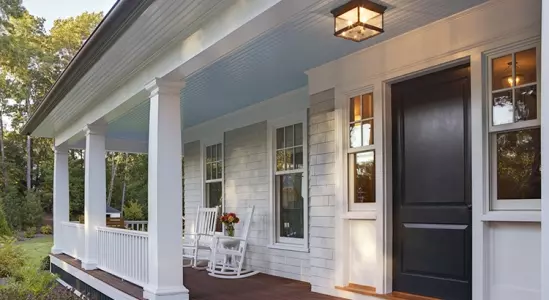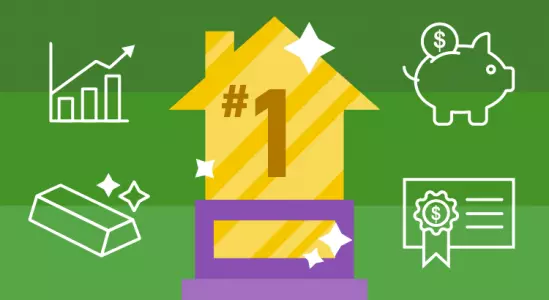
Don’t Get Caught Off Guard by Closing Costs
As a homebuyer, it’s important to plan and budget for the expenses you’ll encounter when you purchase a home. While most people understand the need to save for a down payment, a recent survey found 41% of homebuyers were surprised by their closing costs. Here’s some information to help you get started so you’re not caught off guard when it’s time to close on your home. What Are Closing Costs? One possible reason some people are surprised by closing costs may be because they don’t know what they are or what they cover. According to U.S. News and World Report: “Closing costs encompass a variety of expenses above your property’s purchase price. They include things like lender fees, title insurance, government processing fees, upfront tax payments and homeowners insurance.” In other words, your closing costs are a collection of fees and payments made to a variety of individuals and organizations who are involved with your transaction. According to Freddie Mac, while they can vary by location and situation, closing costs typically include: Government recording costs Appraisal fees Credit report fees Lender origination fees Title services Tax service fees Survey fees Attorney fees Underwriting Fees How Much Will You Need To Budget for Closing Costs? Understanding what closing costs include is important, but knowing what you’ll need to budget to cover them is critical to achieving your homebuying goals. According to the Freddie Mac article mentioned above, the costs to close are typically between 2% and 5% of the total purchase price of your home. With that in mind, here’s how you can get an idea of what you’ll need to cover your closing costs. Let’s say you find a home you want to purchase for the median price of $350,300. Based on the 2-5% Freddie Mac estimate, your closing fees could be between roughly $7,000 and $17,500. Keep in mind, if you’re in the market for a home above or below this price range, your closing costs will be higher or lower. What’s the Best Way To Make Sure You’re Prepared at Closing Time? Freddie Mac provides great advice for homebuyers, saying: “As you start your homebuying journey, take the time to get a sense of all costs involved – from your down payment to closing costs.” The best way to understand what you’ll need at the closing table is to work with a team of trusted real estate professionals. An agent can help connect you with a lender, and together they can provide you with answers to the questions you might have. Bottom Line In today’s real estate market, it’s more important than ever to make sure your budget includes any fees and payments due at closing. Let’s connect so you have the knowledge you need to be confident going into the homebuying process.

Existing Home Sales Increased for Second Consecutive Month
For the first time in a long time, the number of newly listed homes is beginning to rise. Realtor.com reveals the number of existing homes entering the market has increased for two months in a row (this comes after six months of declines). Here’s a graph showing the monthly new listings going back to January of last year. However, buying demand is still outpacing housing supply. Though the increase in homes coming to the market is great news for prospective homebuyers, the number of buyers is still outpacing the number of homes available for sale. “During the final two weeks of the month, more new sellers entered the market than during the same time last year. . . . However, with 5.8 million new homes missing from the market and millions of millennials at first-time buying ages, housing supply faces a long road to catching up with demand.” (Realtor.com) In fact, buyer demand was greater this January than any other January in the last five years (see graph below): This prompted ShowingTime to say: “The latest data from ShowingTime . . . shows a surge in home buyer demand in January. . . . This enormous activity occurred in a month when buyer activity typically slows and followed a historic 2021, where buyer demand across the country was extraordinarily strong.” What does that mean for you? Basically, as homes come to the market, they are quickly being purchased by eagerly awaiting buyers. So even though the number of newly listed homes is increasing, the number of active listings is still shrinking every month because buyers are purchasing homes almost as soon as they come up for sale. That means listings are coming on and off the market so fast that they don’t carry over to be counted in the active listing numbers the following month. Here’s a graph showing the number of active listings each month since last January: This graph shows that the number of active listings has decreased for each of the last five months even though the number of newly listed homes has increased over the last two months. Conclusion: After yesterday's Fed rate hike, the average rate for a 30 year fixed loan is approximately 4.3%. I believe we will continue to see an increase in new listings as FOMO (fear of missing out) kicks in for sellers wishing to get top dollar. I also believe sellers receiving offers above appraised value will slowly diminish, and buyers who were previously priced out will have more opportunities. Thanks for reading! Connect with me to stay updated on trends in South Florida.
![What’s Driving Today’s High Buyer Demand? [INFOGRAPHIC],Ernesto Rodriguez, PA](https://img.chime.me/image/fs/chimeblog/20220221/16/w600_original_0769980d-2582-4864-9c7e-7aa1fff09550-png.webp)
What’s Driving Today’s High Buyer Demand? [INFOGRAPHIC]
Some HighlightsThere’s an influx of buyers looking for homes today, and that means your house is in high demand. Here are a few reasons why so many people are looking to buy a home.Buyers are motivated to beat rising mortgage rates, and many want to escape rising rents. There’s also additional demand from millennials who are reaching peak homebuying age.If you’re thinking about selling your house, today’s demand is great news. Let’s connect to begin the process of listing your house while buyers are ready to purchase.
Categories
Recent Posts

![It’s Still a Sellers’ Market [INFOGRAPHIC]](https://img.chime.me/image/fs/chimeblog/20220404/16/w600_original_1b3ec1b1-87d3-46a7-9617-d3c71eac0ff2-png.webp)


![What’s Driving Today’s High Buyer Demand? [INFOGRAPHIC]](https://img.chime.me/image/fs/chimeblog/20220221/16/w600_original_0769980d-2582-4864-9c7e-7aa1fff09550-png.webp)





